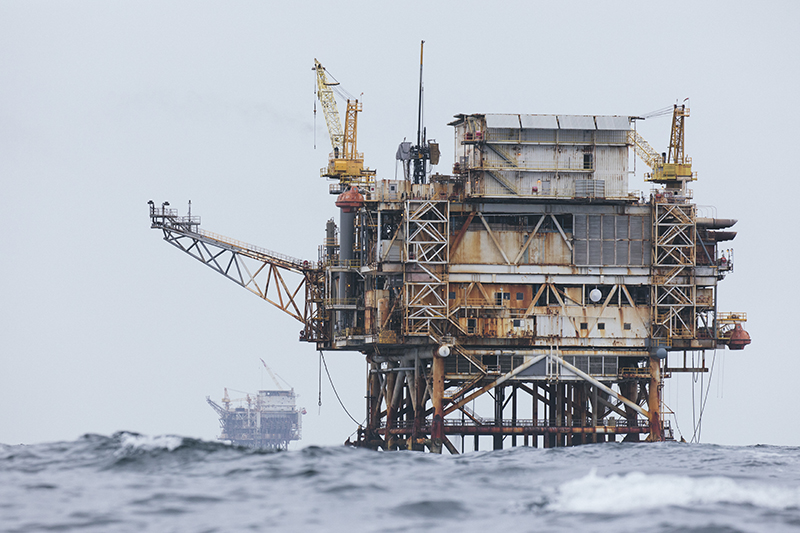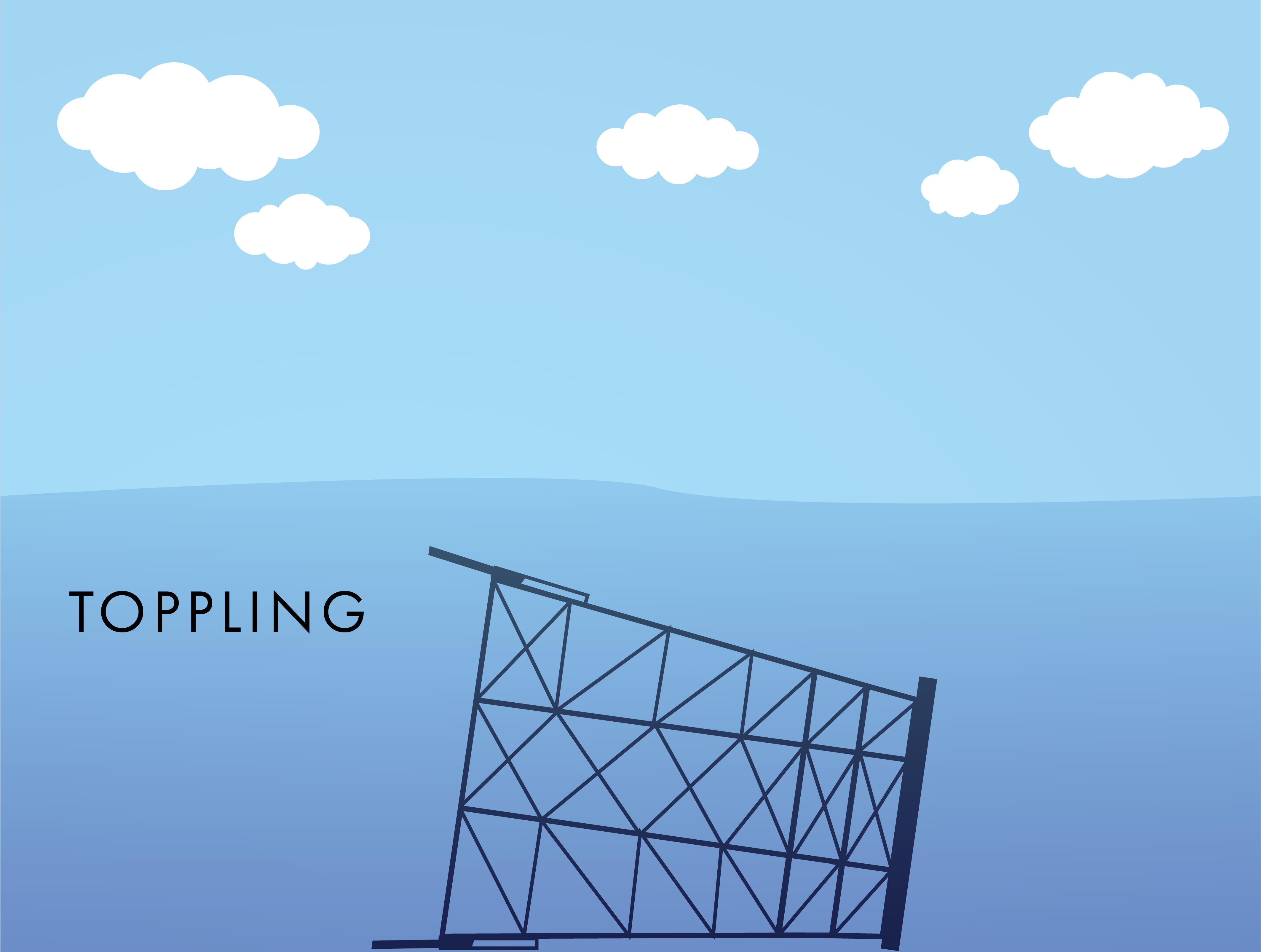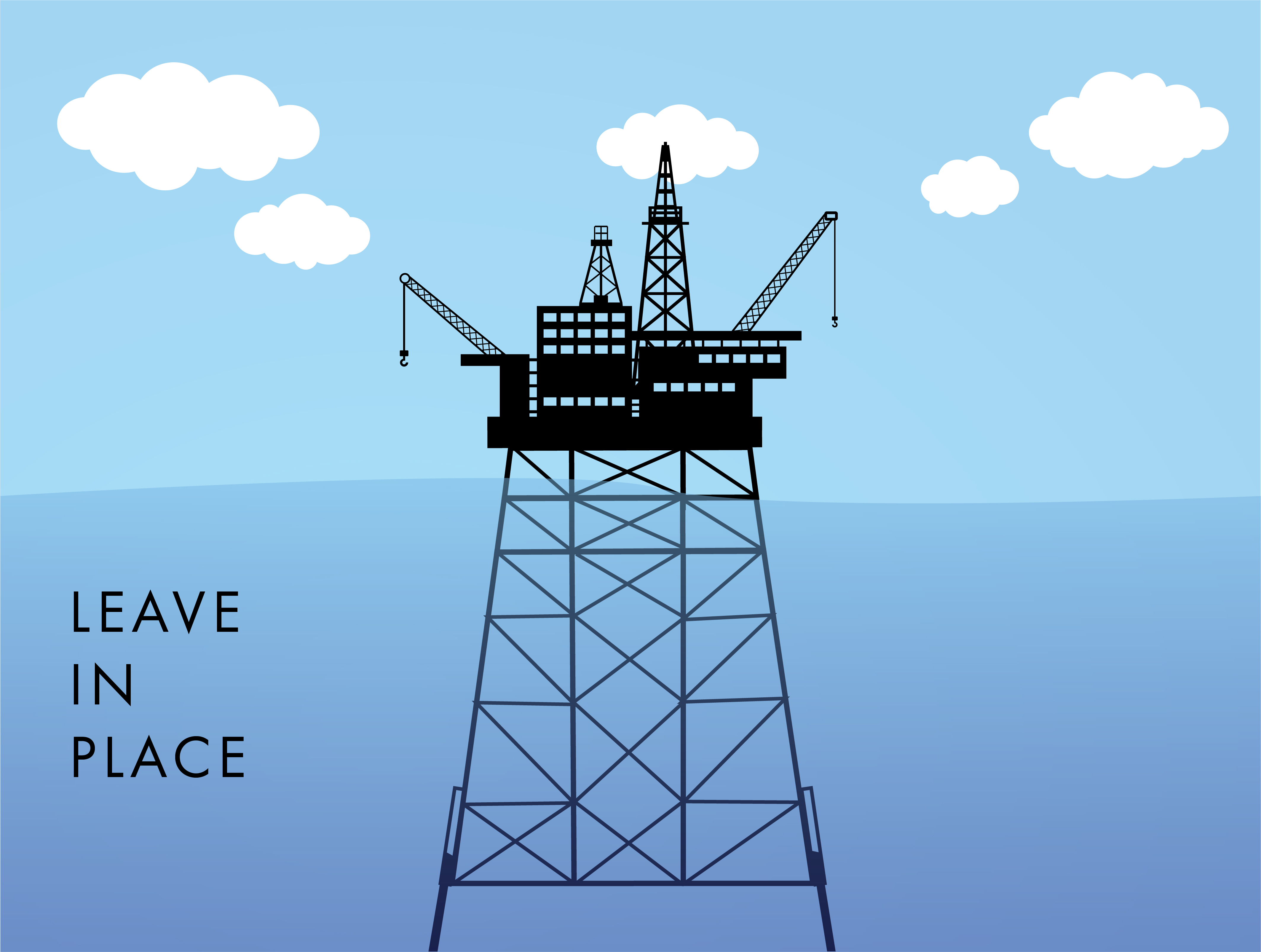Oil Platform Decommissioning
- Goal: Ensure offshore oil and gas platforms are decommissioned in the most environmentally responsible manner
- Year Started: 1998
- Partners: Get Oil Out!, Sierra Club, Citizens Planning Association, Pacific Coast Federation of Fishermen’s Associations, and 50 other groups around the state

The oil and gas platforms that sit along the California Coast are relics of the fossil fuel era that have altered our coastlines, from oil spills polluting our waters to sea level rise eroding our beaches. The first offshore oil wells were developed in the Santa Barbara Channel in 1896 and the installation of the first offshore platforms began in the 1950’s. In total, Southern California has 27 offshore platforms, four of which are in state waters (within three nautical miles of the coast). The Santa Barbara Channel hosts 20 of these structures.
More than 50 years after the first offshore platforms were installed along our coast, several are in the process of being decommissioned. Decommissioning includes plugging oil and gas wells, removing the associated platform structure, and restoring the impacted environment. It is estimated that all platforms will be decommissioned by 2055.
When the platforms were installed offshore California, oil and gas companies were responsible for full removal at the end of the platforms’ productive life. In 2010, the California Marine Resources Legacy Act was passed, which allows for oil and gas operators to apply for a permit for partial removal of the platform. The Act requires environmental review under the California Environmental Quality Act and a special analysis of the net environmental benefit. If the California Ocean Protection Council determines partial removal will result in a “net benefit to the marine environment compared to the full removal of the structure,” a portion of the platform jacket could remain in place as an artificial reef. This is commonly referred to as “rigs-to-reefs.”
Factors the Ocean Protection Council must consider include: 1) the depth and location of the partially removed structure in relation to its value as habitat and its proximity to other natural and artificial reefs; 2) how the proposed structure contributes to the protection and productivity of marine life; 3) any adverse impacts to the marine environment, in particular biological resources and water quality, from full removal that could be avoided by partial removal; 4) any adverse impacts to the marine environment from partial removal; 5) benefits to the marine environment from full or partial removal; and 6) management requirements and restrictions identified from partial removal, such as fishing restrictions.
The Environmental Defense Center advocates for a rigorous environmental and scientific assessment that evaluates the net environmental impacts and benefits of each decommissioning scenario, as required by state law. The decisions must be based on best available science. Platform Holly, off the coast of the University of California, Santa Barbara in state waters, is the first to be decommissioned. How we handle the process of decommissioning Holly can set the precedent for the rest of the platforms in the coming years.
For information on the status of decommissioning for platforms in the Santa Barbara Channel, see the map below and this interagency guide to decommissioning in federal waters off California.
Deeper Dive into Decommissioning Scenarios:
Full Decommissioning
 To date, oil and gas companies have been required to remove the entire structure of offshore oil and gas platforms along the California coast. Full removal ensures oil and gas companies take responsibility for removal and disposal of the platform and associated pollution (drilling muds, cuttings, caissons, shell mounds), as well as restoration. Full removal allows the ecosystem to restore and return to its original function.
To date, oil and gas companies have been required to remove the entire structure of offshore oil and gas platforms along the California coast. Full removal ensures oil and gas companies take responsibility for removal and disposal of the platform and associated pollution (drilling muds, cuttings, caissons, shell mounds), as well as restoration. Full removal allows the ecosystem to restore and return to its original function.
Partial Decommissioning
 Federal law provides an exception to requirements for full removal if: 1) the structure becomes a part of a state’s artificial reef program; 2) the state obtains a permit from the Army Corps of Engineers; 3) the state accepts title and liability for the structure; and 4) the project complies with U.S. Coast Guard navigational requirements. Under a rigs-to-reefs scenario, the platform is either “topped” (cut off at 85 feet per U.S. Coast Guard requirements), “toppled” (pushed over on its side in place), or “towed” (moved to a location more ideal for reefing). This practice has potential benefits and drawbacks. The benefits may include increased fisheries production if managed as marine protected areas. Drawbacks include environmental impacts from leaving contaminated materials in the ocean, incentives for oil companies to expand drilling along the California Coast, and passing the liability for the remaining platform to taxpayers.
Federal law provides an exception to requirements for full removal if: 1) the structure becomes a part of a state’s artificial reef program; 2) the state obtains a permit from the Army Corps of Engineers; 3) the state accepts title and liability for the structure; and 4) the project complies with U.S. Coast Guard navigational requirements. Under a rigs-to-reefs scenario, the platform is either “topped” (cut off at 85 feet per U.S. Coast Guard requirements), “toppled” (pushed over on its side in place), or “towed” (moved to a location more ideal for reefing). This practice has potential benefits and drawbacks. The benefits may include increased fisheries production if managed as marine protected areas. Drawbacks include environmental impacts from leaving contaminated materials in the ocean, incentives for oil companies to expand drilling along the California Coast, and passing the liability for the remaining platform to taxpayers.
Leave in Place and Alternative Use
 There has been ongoing conversation in the community about re-imagining what these offshore platforms could be used for at the end of their hydrocarbon production life. Alternative uses, such as offshore wind technology, marine research, and aquaculture, have all been brought up as potential uses. However, to leave these structures in place for an alternative use has myriad challenges, with the financial burden perhaps being the largest. The decommissioning costs and liabilities would remain with the original operator who would simply be putting off the cost of decommissioning. The new lessee would take on any new operating costs and decommissioning obligations that accrue after the transfer. In total, estimates for decommissioning are in the hundreds of millions of dollars.
There has been ongoing conversation in the community about re-imagining what these offshore platforms could be used for at the end of their hydrocarbon production life. Alternative uses, such as offshore wind technology, marine research, and aquaculture, have all been brought up as potential uses. However, to leave these structures in place for an alternative use has myriad challenges, with the financial burden perhaps being the largest. The decommissioning costs and liabilities would remain with the original operator who would simply be putting off the cost of decommissioning. The new lessee would take on any new operating costs and decommissioning obligations that accrue after the transfer. In total, estimates for decommissioning are in the hundreds of millions of dollars.
Other Issues:
Liability passed to taxpayers
Should California decide to include offshore platforms in an artificial reef program, federal regulations require that liability for those structures would be transferred to the state. Liability may arise if there are damages to shipping, fishing, recreational users, etc., and would require the state to take affirmative measures such as recording the location on charts and installing buoys to warn of navigational hazard. This would also require additional monitoring with costs in perpetuity. If anything were to go wrong, such as injury to persons or property, the costs would be imposed on California taxpayers, while oil and gas companies would benefit financially through cost savings. Although the 2010 state law includes an indemnification provision that would transfer liability to the oil industry, the provision has uncertain effect.
Cost Savings
Oil companies can save millions of dollars by leaving part of a platform structure in the ocean. A portion of the costs savings would then be split with the state. This economic incentive to oil companies may have the perverse incentive of encouraging them to expand oil exploration along our coast, knowing they can reduce costs by leaving platforms in the ocean.
Long term implications
The long term implications of partial removal are uncertain. While we can pull from lessons learned in the Gulf of Mexico and other areas, the California Current ecosystem has unique characteristics that must be considered. Researchers that have investigated local impacts of platforms on fisheries production found that partial removal (such as topping) would likely retain fish biomass. However, a recent study also found that removing the top 85 feet of the platform would dramatically alter the community of species on the structure because the organisms that provide food and shelter for shell mounds are removed. Over time, sedimentation rates will lead to the disappearance of the habitat formed at the base of the platforms. A study of shell and debris mounds left where four platforms were partially removed offshore Summerland found that the mounds no longer provided valuable habitat. Toxic pollutants from past discharges also remain in these mounds and leach into natural surrounding sediments. Finally, artificial structures can also harbor invasive species, which is already of concern in the Santa Barbara Channel.
California has yet to develop its artificial reef program or create a plan to manage the reefs successfully. It is uncertain how the state would manage an artificial reef to ensure it remains a productive ecosystem that scuba divers, fishers, and other stakeholders are hoping for. The net environmental impact will very likely depend on whether the surrounding waters are part of the state’s network of marine protected areas or allowed to be fished. Although a higher abundance of species typically occurs on platforms, it may be because they are protected from fishing. If fished, the platforms’ role as a fish attractor may be limited. Recreational opportunities will depend on how the state decides to manage the artificial reef. Should they become part of a protected area, recreational fishing opportunities may be limited.






